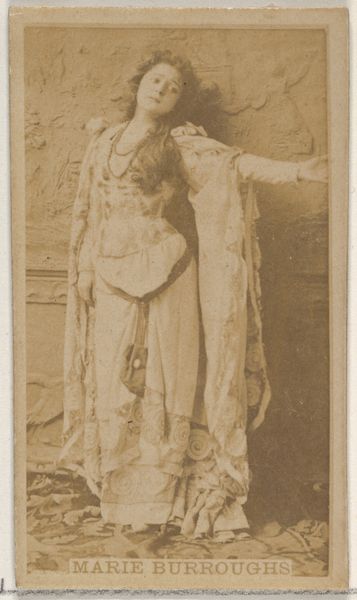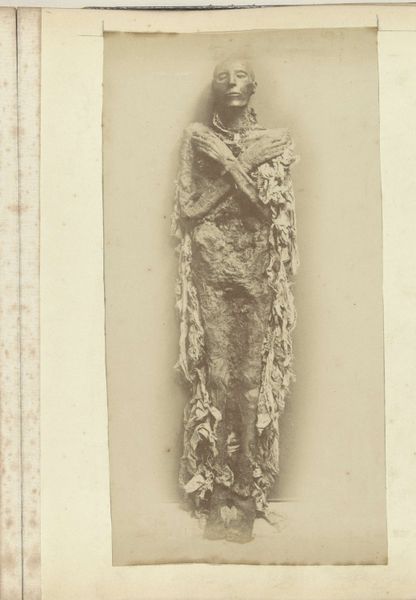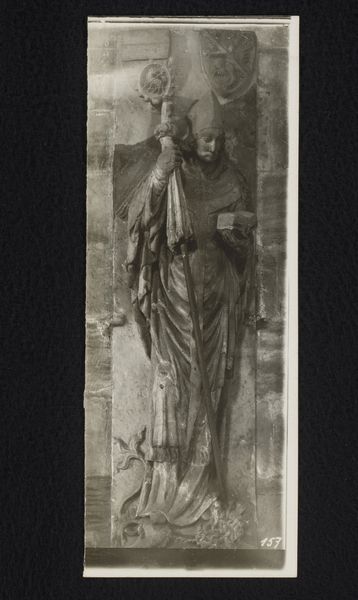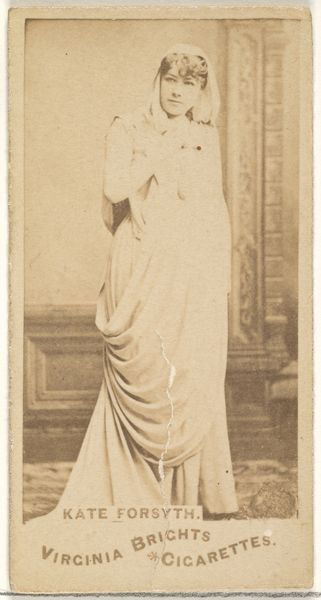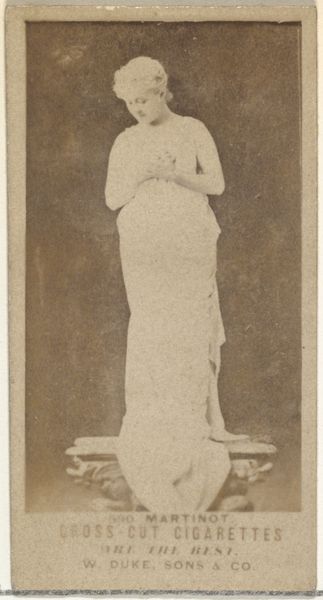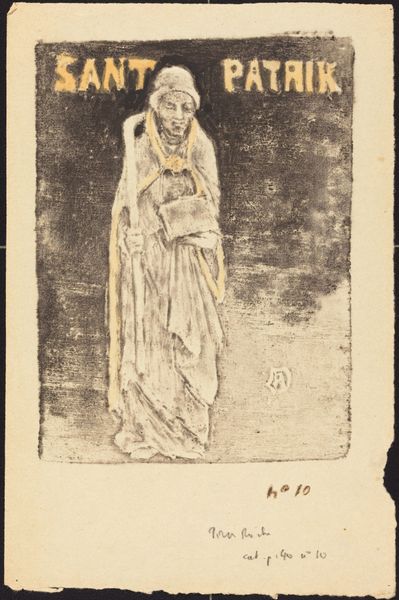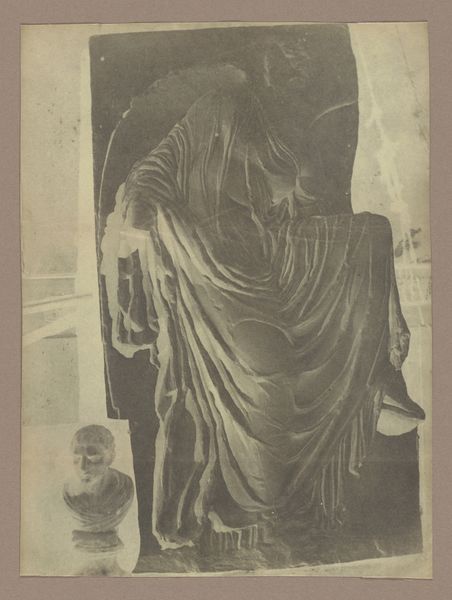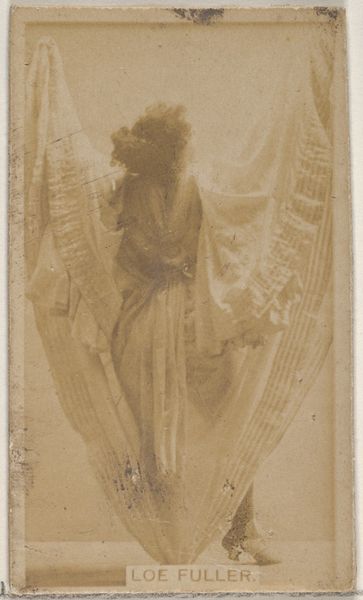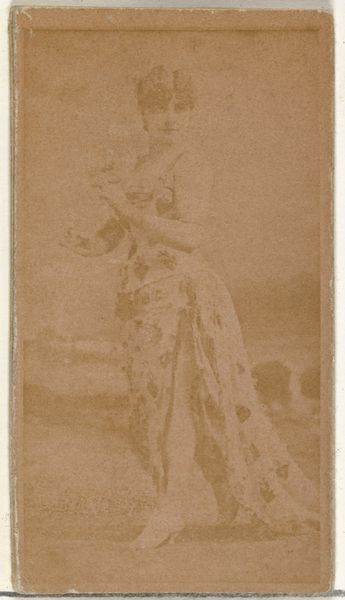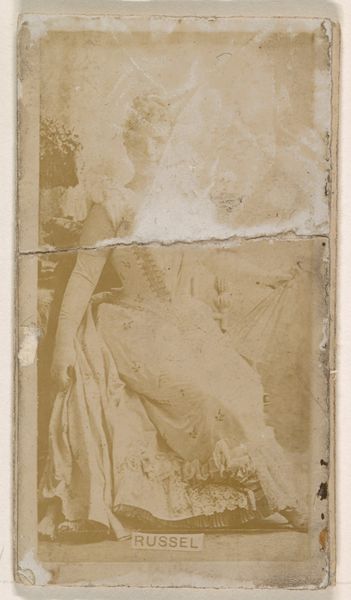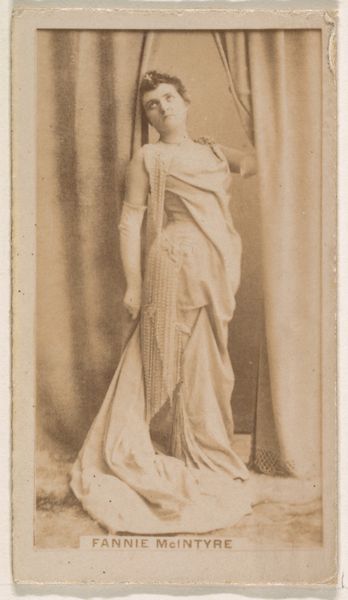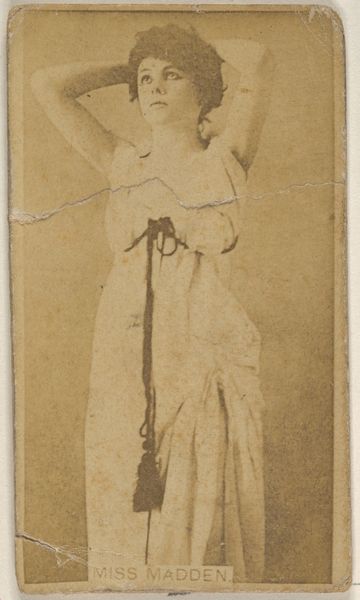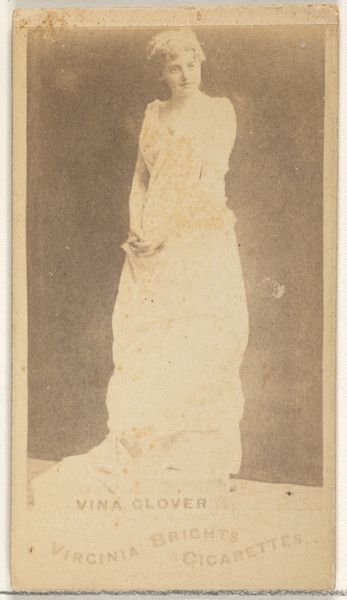
Caryatid, Erechtheion, Athens (56. Athènes. Caryatides. Erecht.) 1842
0:00
0:00
photography, sculpture
#
portrait
#
greek-and-roman-art
#
form
#
photography
#
ancient-mediterranean
#
sculpture
Dimensions: Image: 9 1/2 × 3 11/16 in. (24.1 × 9.4 cm)
Copyright: Public Domain
Editor: We're looking at Joseph-Philibert Girault de Prangey's photograph, "Caryatid, Erechtheion, Athens," taken in 1842. It’s a photographic image of a sculpture, specifically one of the Caryatids from the Erechtheion. I'm struck by how monumental it feels despite the small scale of the photograph itself, especially with the angle. What do you make of this composition? Curator: It's fascinating how de Prangey captures the essence of form through this early photographic process. Note the tonal gradations rendered through light and shadow. These effects model and bring out the form of the sculpture, thus activating it with dynamism. Consider the visual contrast between the solidity of the figure and the ephemeral quality of the photographic medium. Editor: It’s like a record of something solid becoming almost ethereal. The texture also jumps out—the stone looks almost like fabric in places. Is there any theoretical angle that might speak to the textural juxtaposition? Curator: Absolutely. Semiotically, we might analyze the "texture" as a signifier. It complicates our reading of the photograph by layering new signifying meanings, such as age, damage, or simply the materiality of both the sculpture and the photographic process. This complex layering undermines and problematizes the transparency typically assigned to photographs, even one from this period. Note also how the architectural background participates in this signifying web, establishing a sense of spatial recession and structural balance with the statue's imposing verticality. How do you perceive the overall effect? Editor: I now appreciate how much more is going on than just a record of a sculpture; it's a visual argument about form and representation. It’s interesting to see that even an early photograph like this invites so much complex, structuralist interpretations. Thanks for sharing this. Curator: Indeed. Close examination of artistic materiality inevitably opens broader theoretical interpretations. It deepens one’s understanding of historical works, but it also enriches our view of modern practices.
Comments
No comments
Be the first to comment and join the conversation on the ultimate creative platform.
